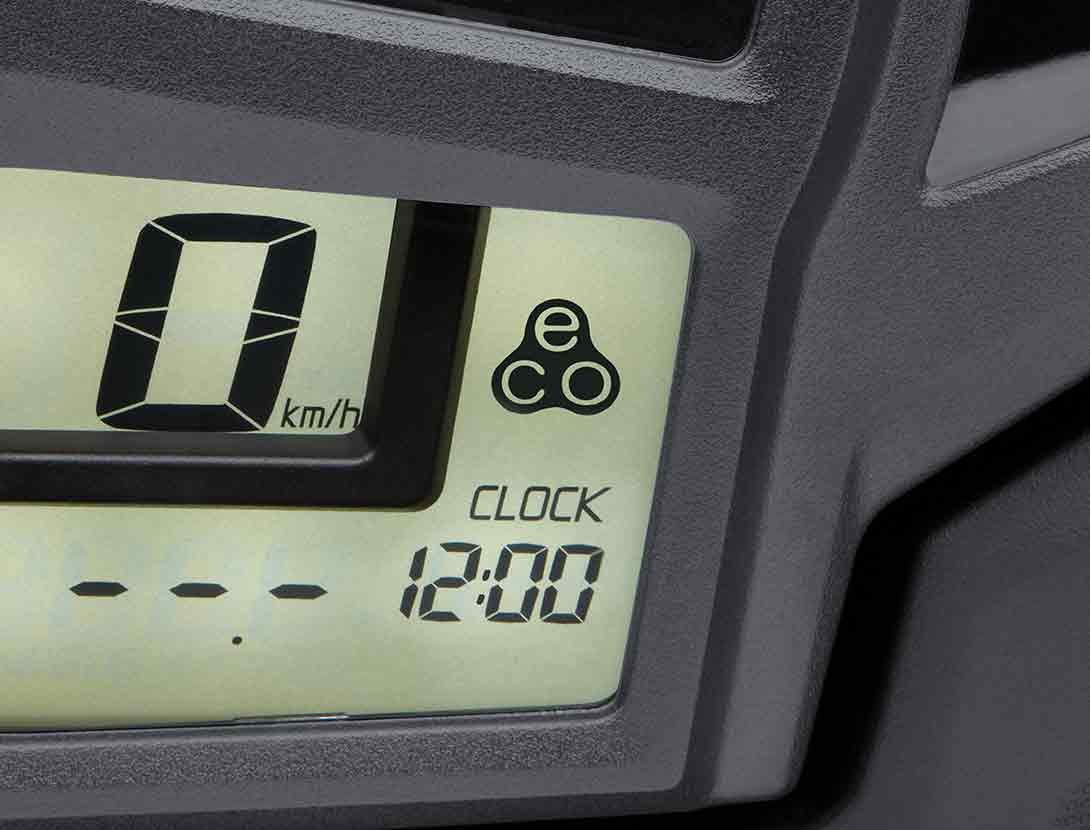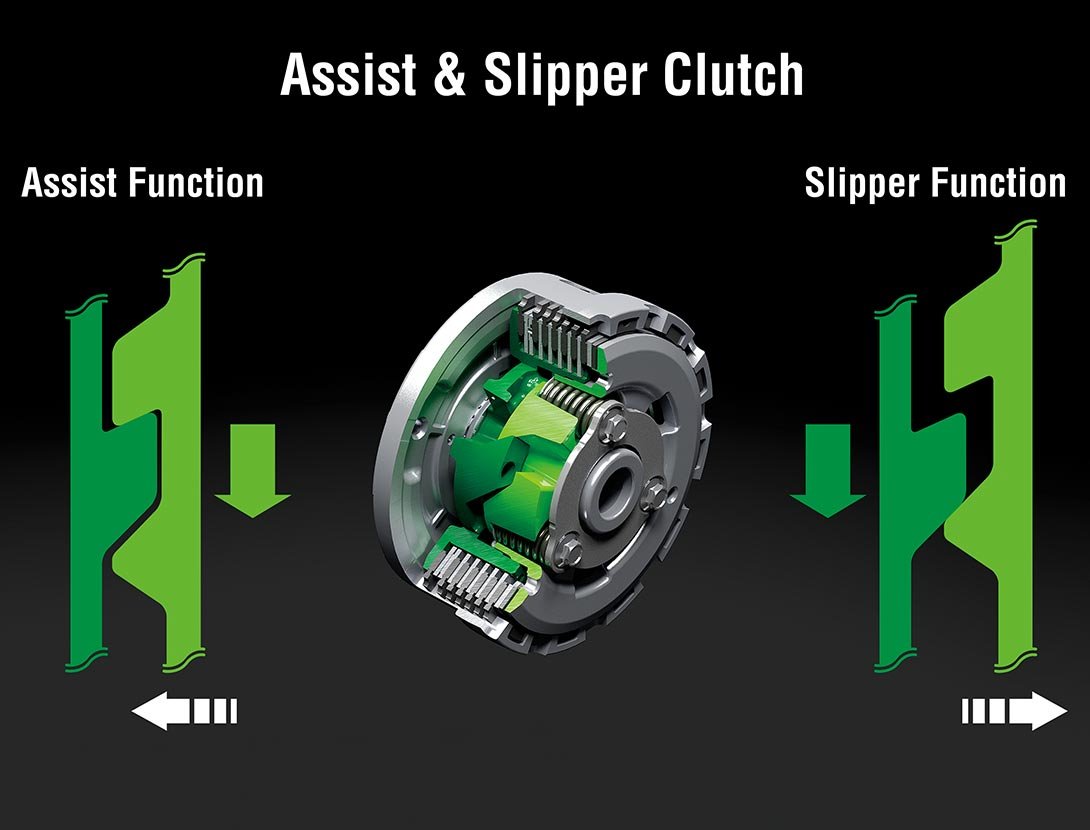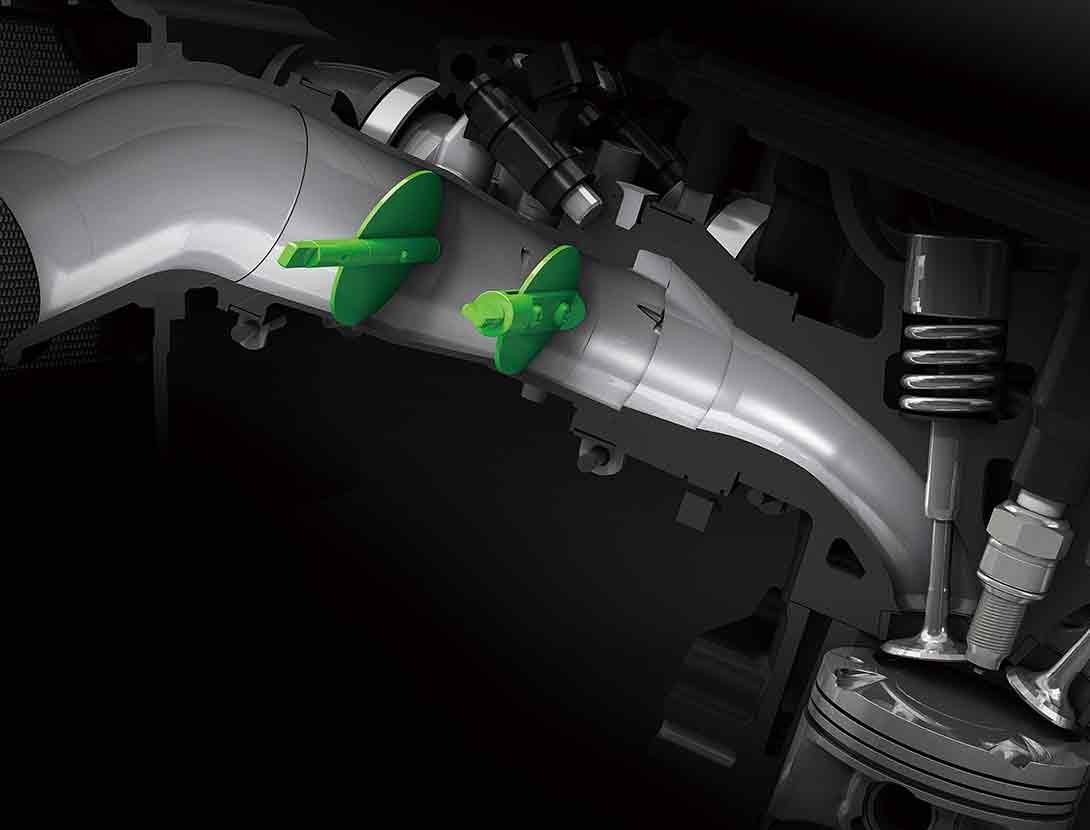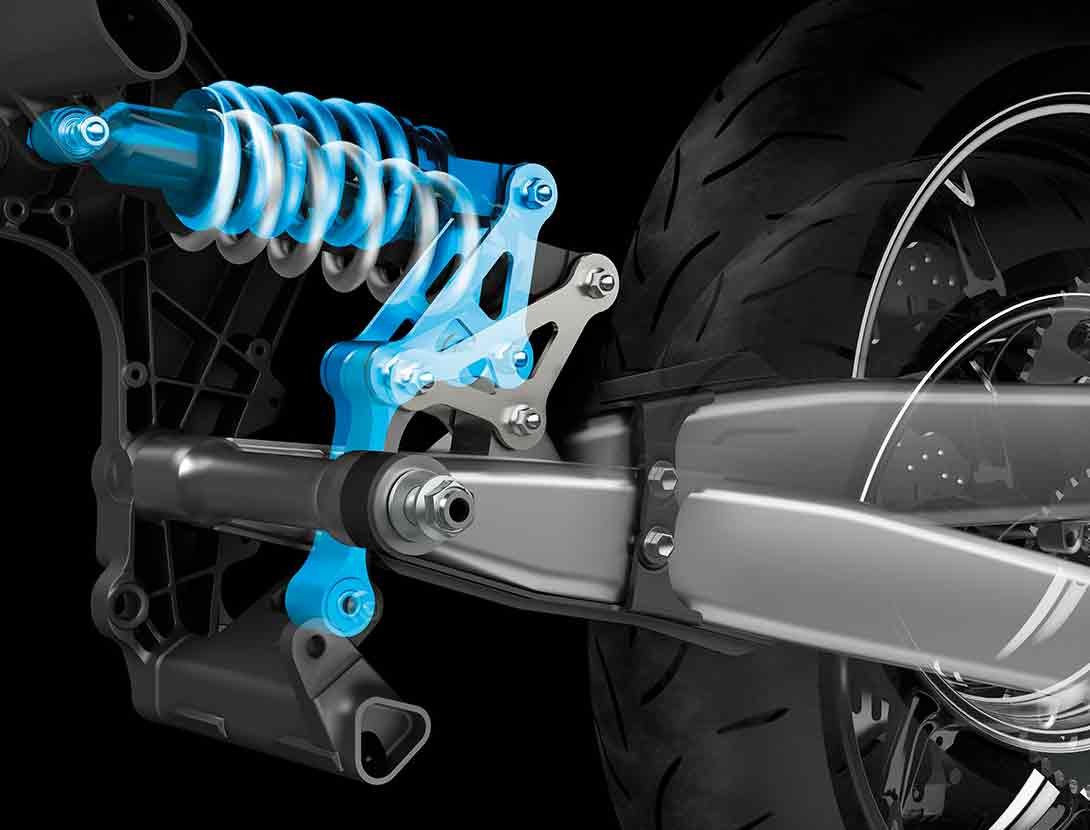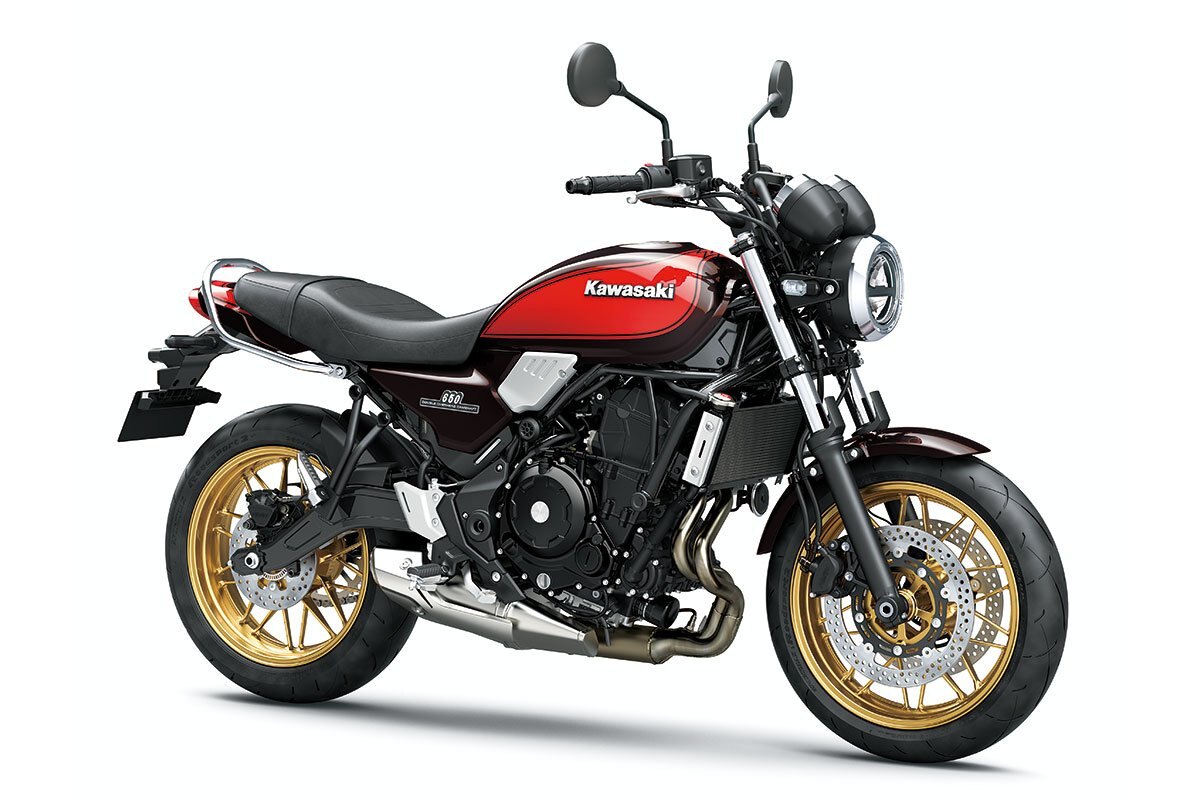
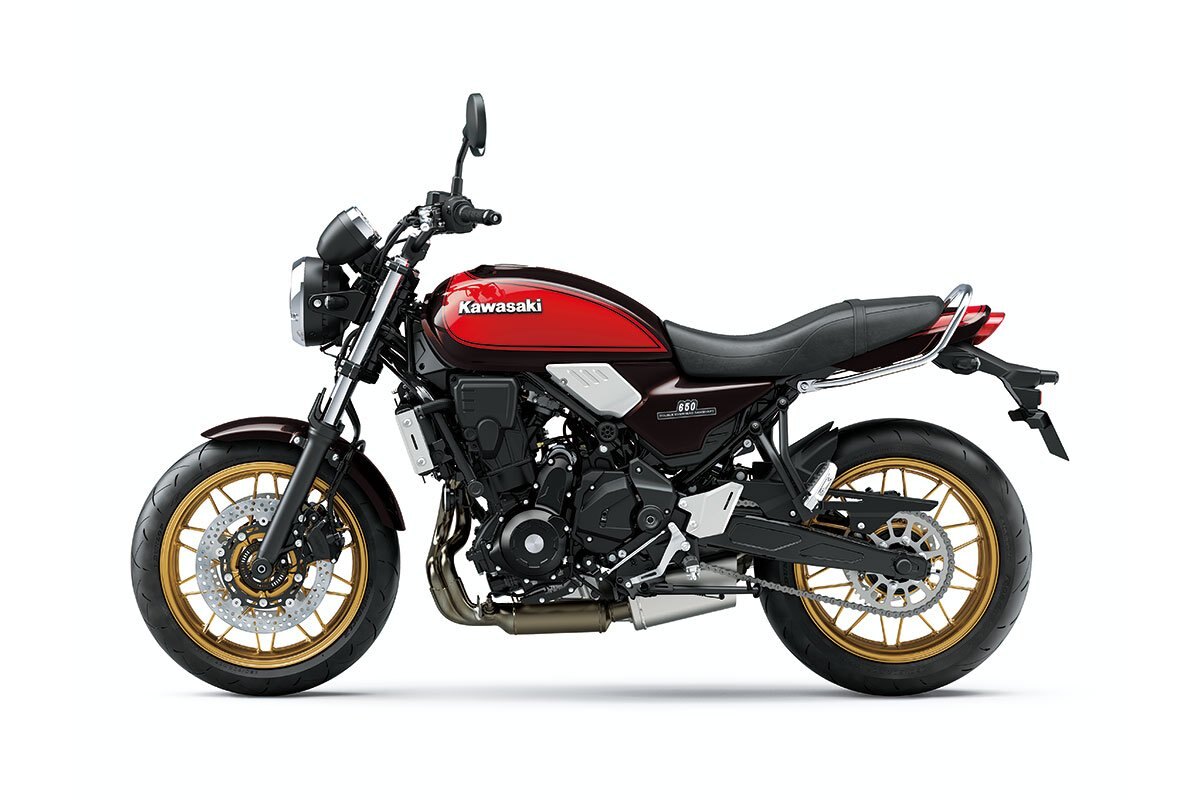
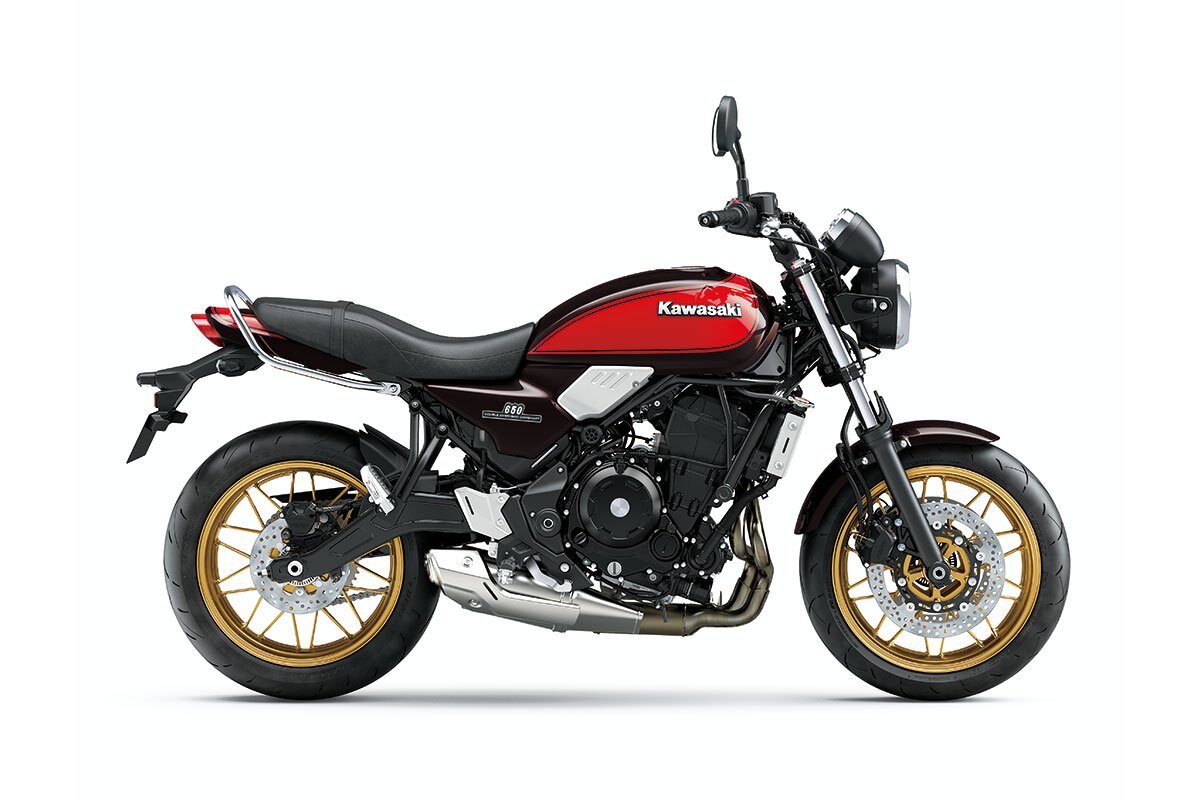
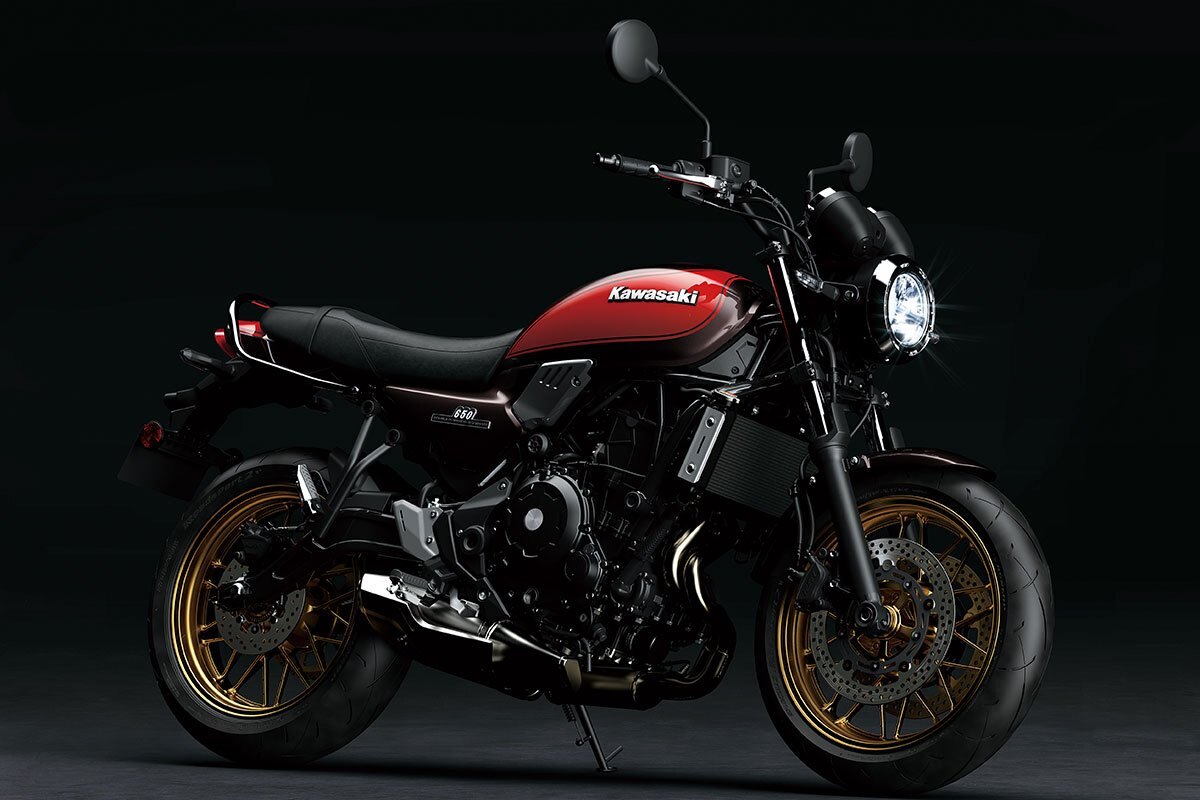
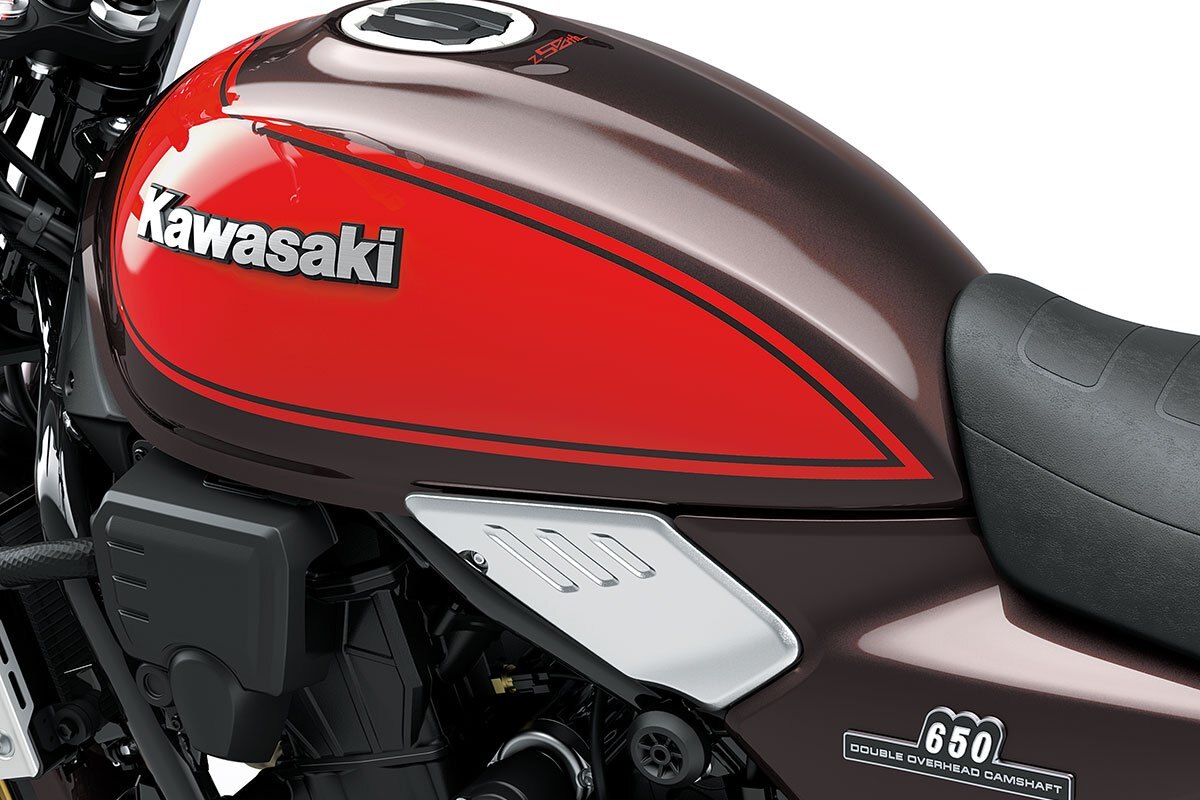
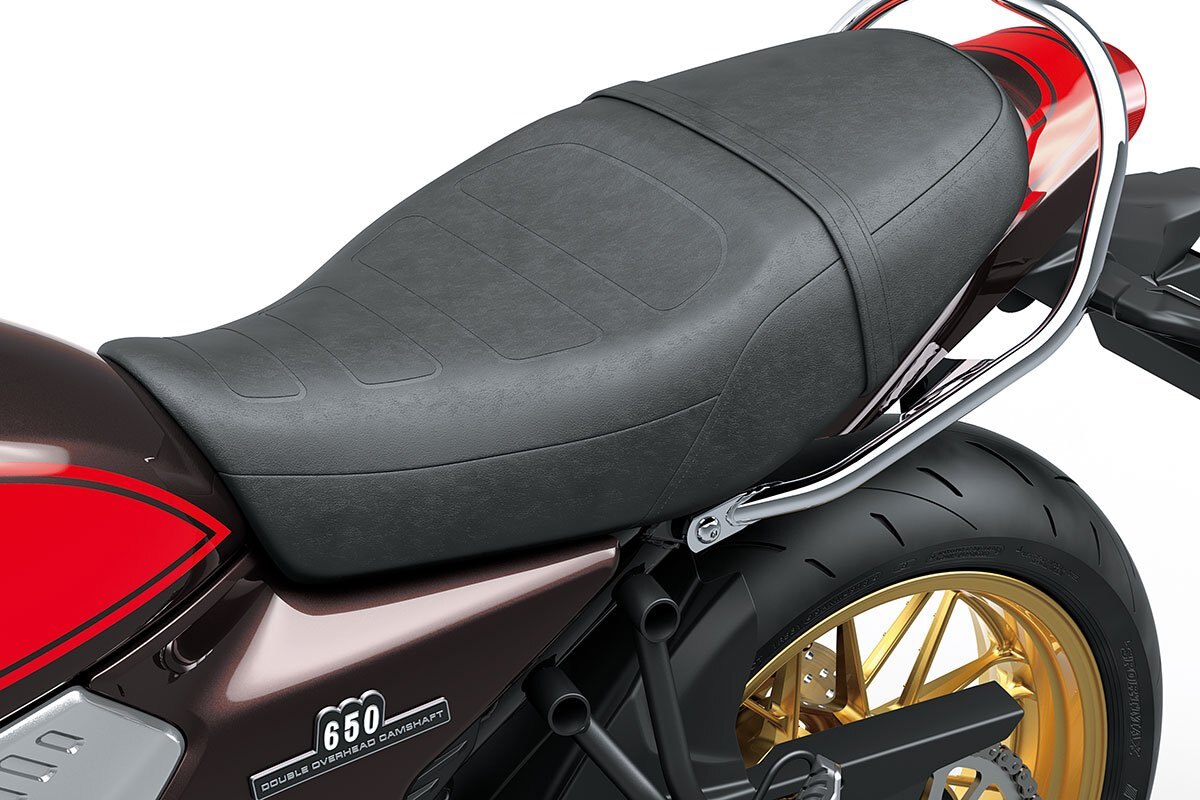
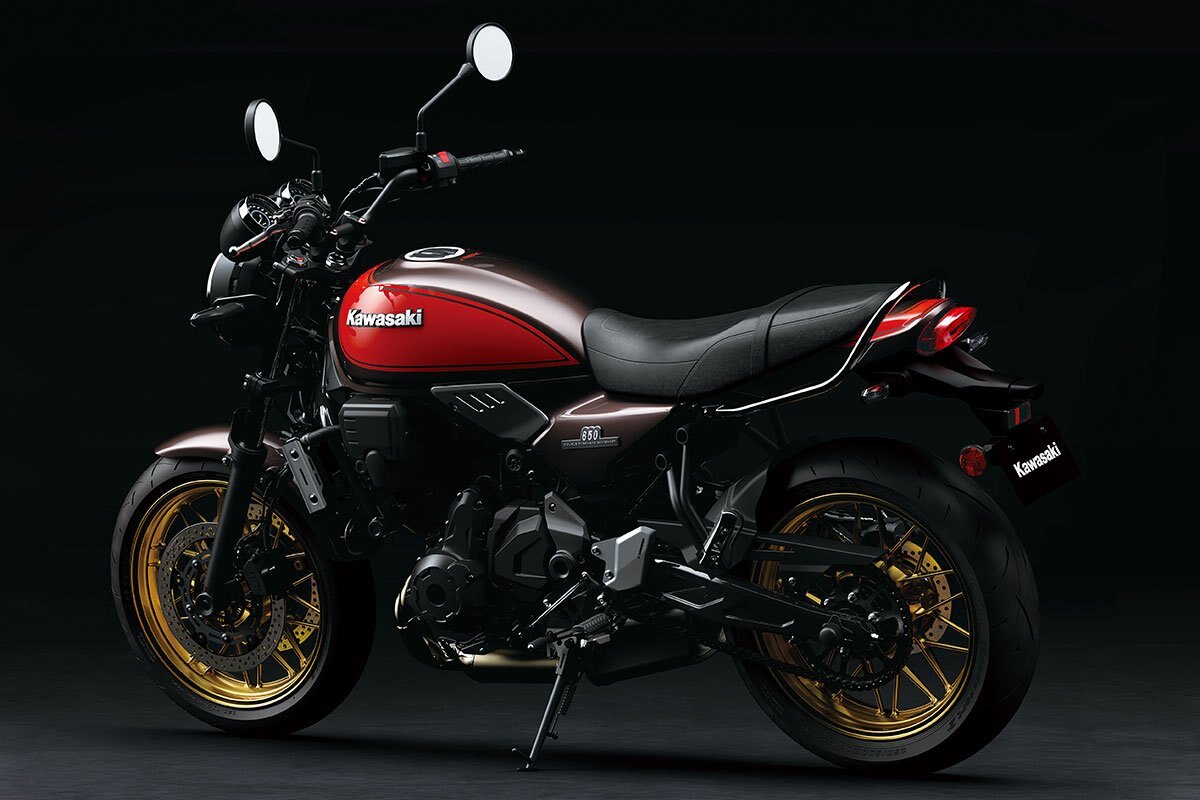
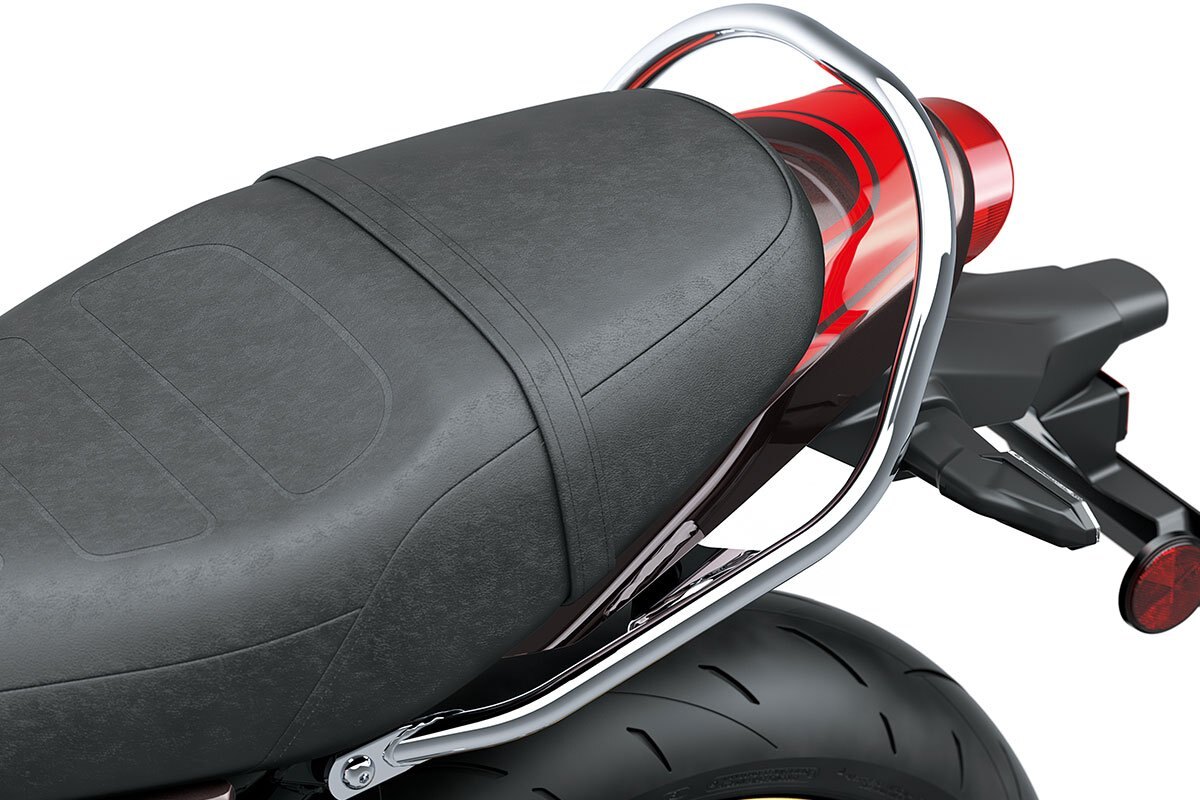
2022 Kawasaki Z650RS 50TH ANNIVERSARY
| The new Kawasaki Z650RS combines Retro style with modern Sports technology. Distinctive styling notes like a classic round LED headlight, needle instrumentation, 70s influenced bodywork and colours, plus a twin-cylinder engine, create a stunning neo-retro segment reference point. The Kawasaki Z650RS is destined to impress riders of all skill and experience levels with its lovingly distilled spirit of RETROVOLUTION. |
FEATURING
|
ADDITIONAL VEHICLE FEATURES
|
ECONOMICAL RIDING INDICATORUsing high-precision electronic control for engine management, Kawasaki models can achieve a high level of fuel efficiency. However, fuel consumption is greatly affected by throttle use, gear selection, and other elements under the rider's control. The Economical Riding Indicator is a function that indicates when current riding conditions are consuming a low amount of fuel. The system continuously monitors fuel consumption, regardless of vehicle speed, engine speed, throttle position and other riding conditions. When fuel consumption is low for a given speed (i.e. fuel efficiency is high), an "ECO" mark appears on the instrument panel's LCD screen. By riding so that the "ECO" mark remains on, fuel consumption can be reduced. While effective vehicle speed and engine speed may vary by model, paying attention to conditions that cause the "ECO" mark to appear can help riders improve their fuel efficiency – a handy way to increase cruising range. Further, keeping fuel consumption low also helps minimize negative impact on the environment. |
ABS (ANTI-LOCK BRAKE SYSTEM)Kawasaki ABS systems use front and rear wheel sensors to constantly monitor wheel speed. Should information from either of the sensors indicate that wheel lock has occurred, the ABS ECU directs the pump in the ABS unit to modulate brake fluid pressure (releasing and reapplying pressure so that traction can be regained) until normal operation resumes. ABS offers rider reassurance that contributes to greater riding enjoyment. |
ASSIST & SLIPPER CLUTCH
|
Dual Throttle Valves
|
HORIZONTAL BACK-LINK REAR SUSPENSION
|
